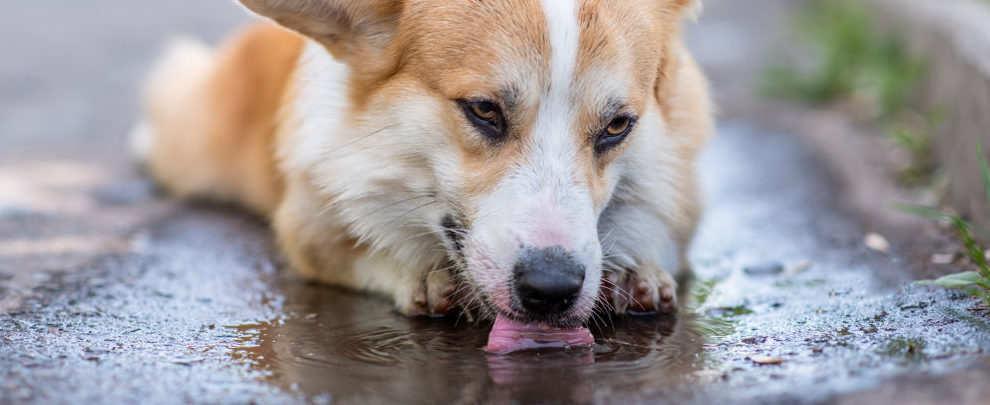One of the lesser known and hidden dangers of hurricanes and tropical storms is a waterborne bacterial infection called leptospirosis, which can be deadly to humans, dogs, and other animals. It’s likely that following Hurricane Dorian, the incidence of leptospirosis will increase in the Bahamas. It’s not the only place at risk. Rising ocean temperatures and greater storm intensity mean other areas will likely see more leptospirosis as well.
Here’s what happens: Infected wildlife, farm animals, or unvaccinated dogs urinate in the floodwaters. Infection can occur via an open wound or by inadvertently swallowing even a small amount of tainted water. Unvaccinated dogs caught in floodwater are especially susceptible.
Where Lepto Occurs
Hurricanes and floods aren’t required for leptospirosis. Any body of water might harbor the bacterial infections. Lepto, as it’s called for short, requires water, and prefers fairly warm water, so it’s no surprise that the state with the greatest incidence of leptospirosis is Hawaii. Still, the disease occurs in all 50 states, as well as in other countries.
According to the World Health Organization, leptospirosis, while comparatively rare in the U.S., is one of the most significant zoonotic diseases on the planet. That means it’s one of the most common diseases passed from animals to people. According to a 2015 study, annually there are 1.03 million cases of lepto and 58,900 human deaths as a result of the disease.
Lepto in humans is a far more significant issue where sewage is poor, when there is frequent flooding, or where people bathe in water shared with wildlife or livestock. Outbreaks in parts of Asia and Africa are not uncommon. As hurricanes and typhoons increase in number and intensity, that number will likely rise. And don’t fool yourself; leptospirosis does happen in the U.S., even without extraordinary flooding brought on by tropical storms, hurricanes or other weather-related events.
How Lepto Is Transmitted
Because farm animals and wildlife carry lepto, it was historically thought to be solely a problem of rural or “wild” America. It turns out to be prevalent and even increasing in big cities, according to several recent studies. One such study, “The Descriptive and Spatio-Temporal Analyses of 45 Canine Leptospirosis Cases in Chicago, 2015-2018,” is from PhD candidate Amanda Smith at the Ohio State University College of Veterinary Medicine, who investigated leptospirosis in the heart of Chicago, away from Lake Michigan.
The explanation for more lepto in urban areas appears to be urban wildlife, particularly city rats. Warming temperatures could also a play a role.
Whatever the cause, if an infected city rat piddles in a puddle and an unprotected dog walks through it and licks a paw or two soon after, an infection can easily occur. Dogs might be more susceptible than humans in the U.S., as dogs are more likely to drink pond, river, or lake water or water from a puddle.
Imagine an infected puppy or adult dog who has an accident indoors, and a toddler crawls through it, and hands are put in the mouth. Or you wipe up after an infected dog has an accident and happen to not be so careful about washing thoroughly (which is all you need to do); the disease could be passed on. If your dog is diagnosed with leptospirosis, your veterinarian will warn you to be careful. But dogs can exhibit no signs yet still harbor the bug. So, there’s no way to know, except that dogs protected with the vaccination are exceedingly unlikely to be infectious.
According to the Centers for Disease Control, some people may be infected but still be asymptomatic, while others can suffer kidney or liver damage, respiratory distress, or even death. The same is true in dogs unprotected by the vaccine. Some dogs are asymptomatic but likely still carriers. Other dogs can become ill or even die. This happens with some degree of regularity because the dog’s caretakers were unaware of a vaccine, refused the vaccine, or just didn’t get around to it. A vaccine may protect against most of the strains or serovars, so this is a topic to discuss with your veterinarian not only for your dog’s health but also for public health.
This article was reviewed/edited by board-certified veterinary behaviorist Dr. Kenneth Martin and/or veterinary technician specialist in behavior Debbie Martin, LVT.








